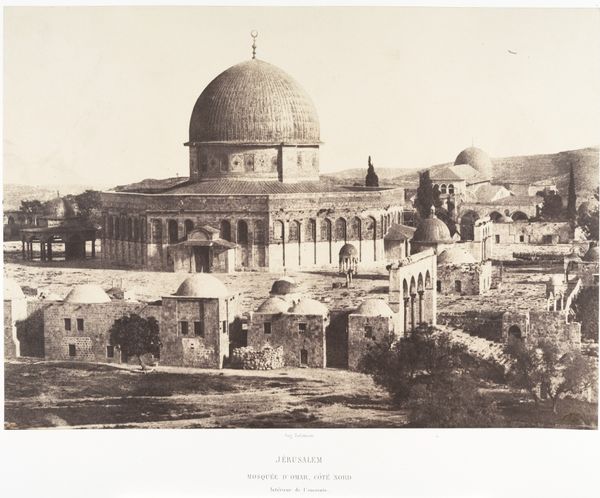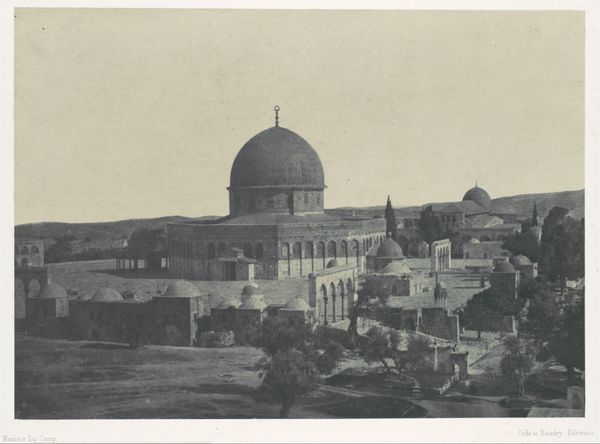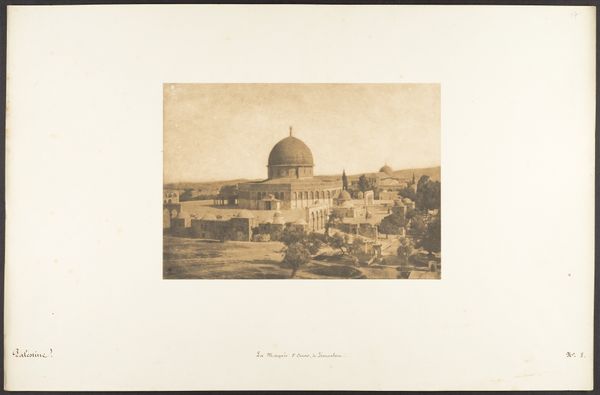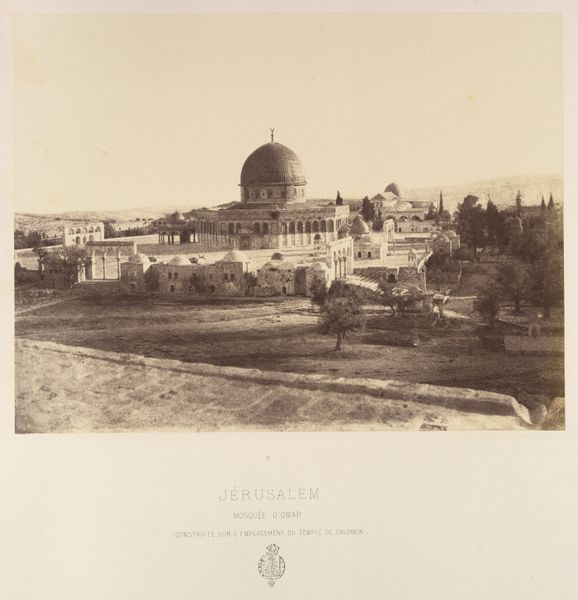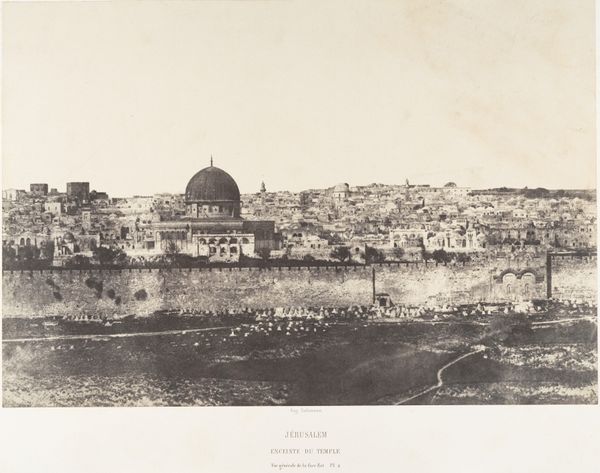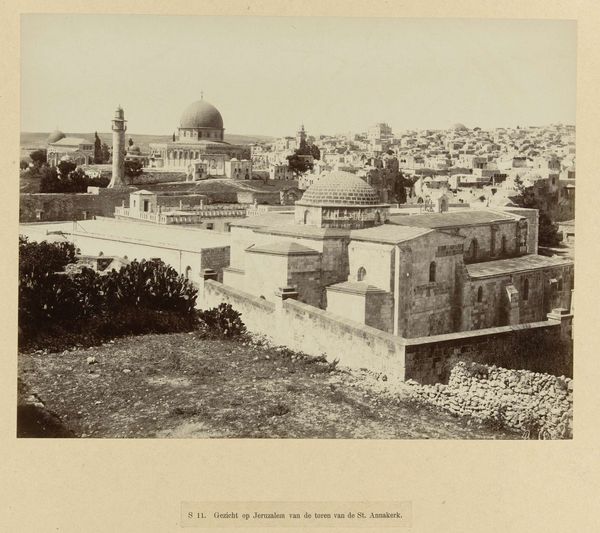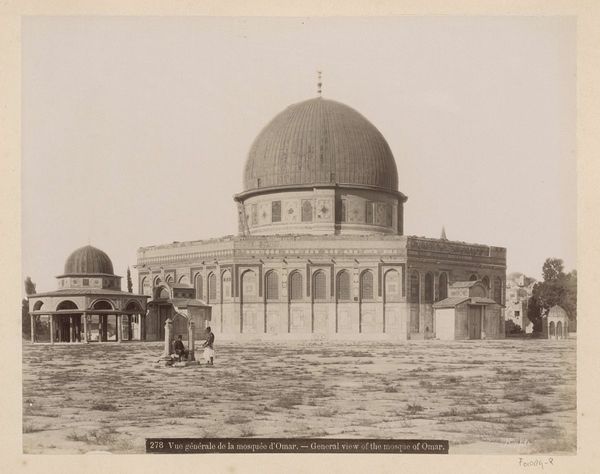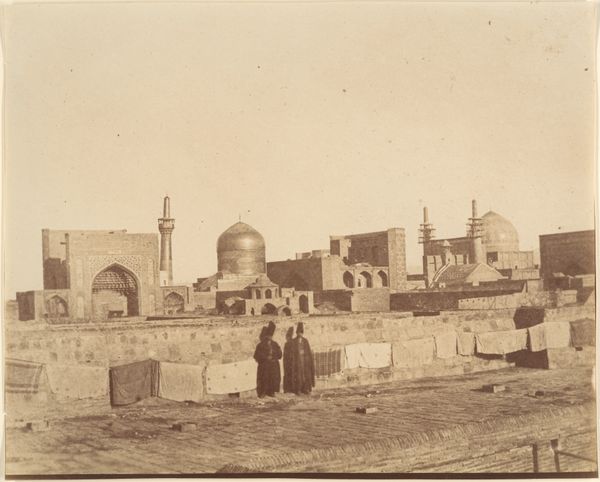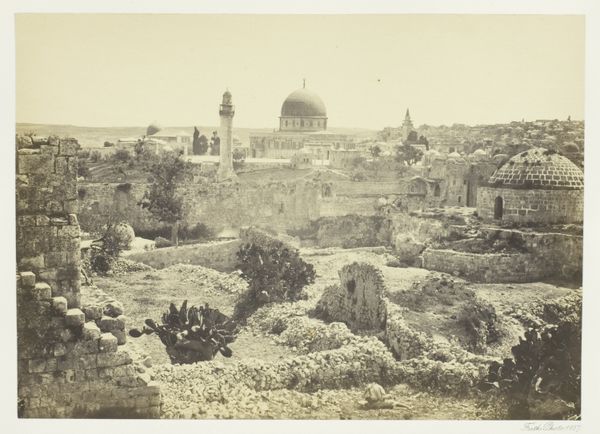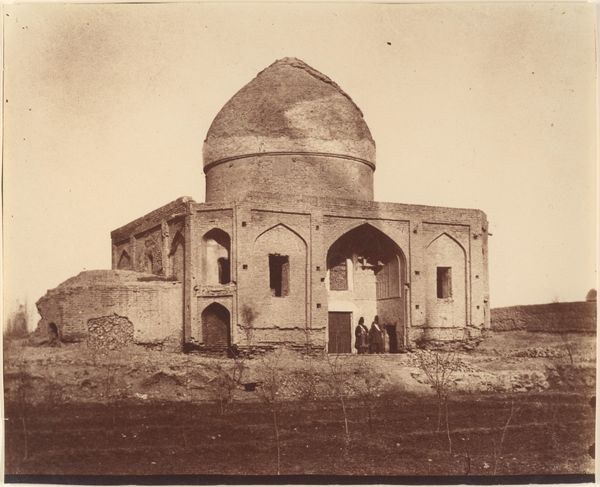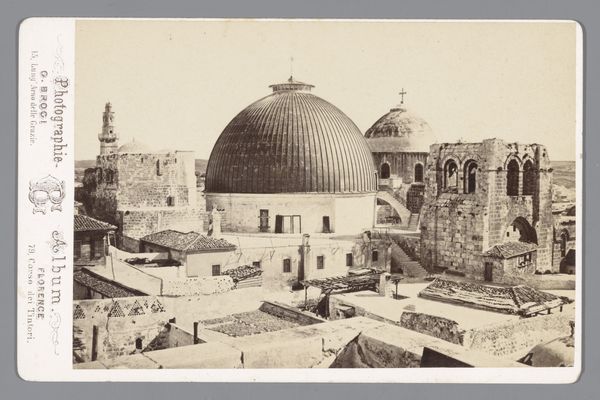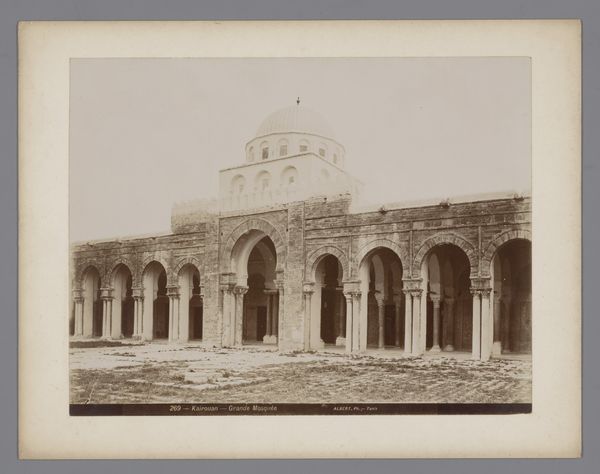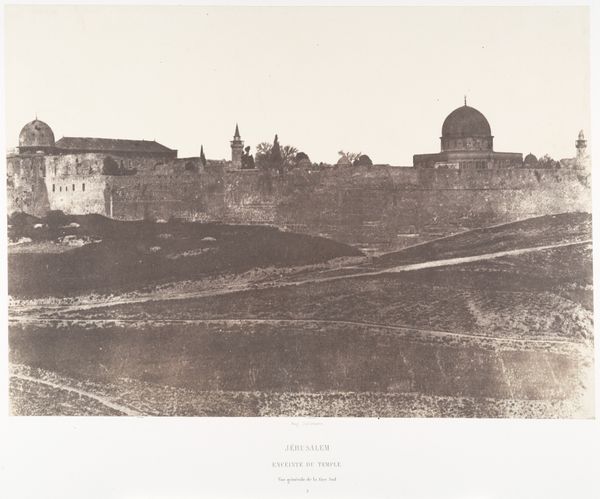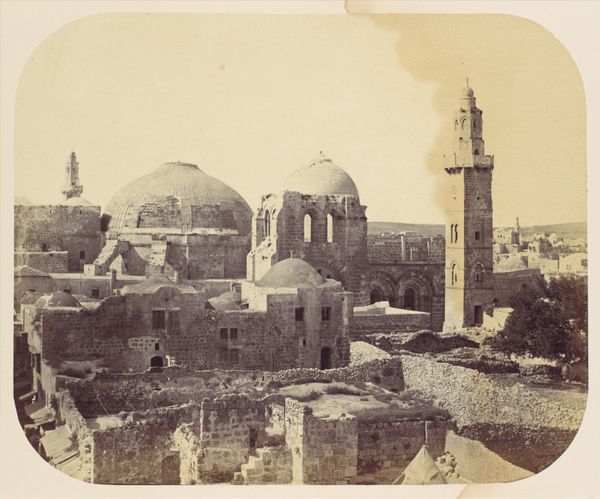
photography, albumen-print, architecture
#
landscape
#
photography
#
orientalism
#
islamic-art
#
albumen-print
#
architecture
#
realism
Copyright: Public Domain
Curator: Looking at this albumen print, made in 1857, one is immediately struck by the incredible stillness of Jerusalem. It is titled "Jerusalem, Site of the Temple on Mount Moriah." Editor: It does possess a rather haunting quietude. All soft browns and beiges… like faded memories clinging to stone. But there’s also something imposing about its structure, despite the warmth. A sense of authority. Curator: Indeed. The photograph’s composition, almost perfectly circular, focuses the gaze directly onto the Dome of the Rock. The meticulous detail afforded by the albumen process captures the intricate architectural nuances. Editor: It is a very picturesque image of what some call orientalism. How might this presentation of Jerusalem's holy sites reflect a Western gaze on Islamic and Palestinian history? Is this a record of a place, or a declaration of a certain cultural perspective? Curator: Well, consider the photographer’s background. We may consider it an artistic expression, rooted in capturing a visual representation of religious and historical significance. Editor: I’d counter that and suggest it invites contemplation regarding access and representation. Who is allowed to document, and whose narratives gain visibility? There's a tension here between a seemingly objective rendering and the inevitable subjectivity inherent in any act of observation. What does it tell us about who controls the narrative of a space so intensely contested? Curator: Fair. Photography itself was still a relatively new medium, finding its place between objective record and artistic interpretation. The framing certainly monumentalizes the Dome, lending it an almost ethereal quality. Editor: Precisely! An ethereal quality born not only from photographic technique but from very distinct ideological motivations that might also reinforce colonial power dynamics, right? Curator: Perhaps. On second viewing I may grant the complex interplay of history, power, and artistic representation you are highlighting in this space, Jerusalem. Thank you for this different understanding. Editor: Anytime. It's precisely this multilayered complexity that makes viewing historical images like these continually compelling!
Comments
No comments
Be the first to comment and join the conversation on the ultimate creative platform.
